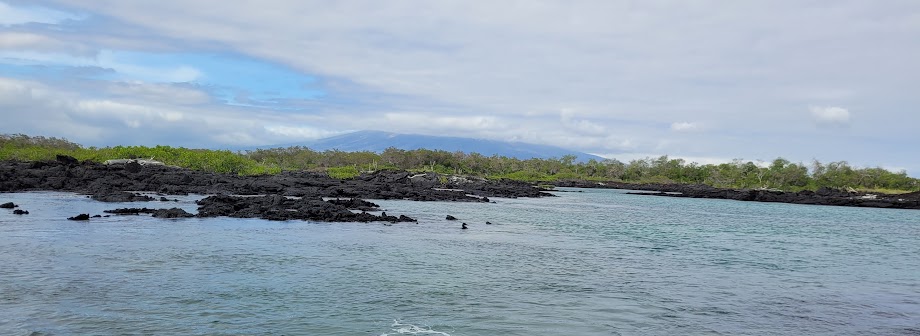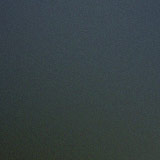History of the Galapagos
A true past.

Prehistory
Archeological remains have been found on the islands, which show that the first visitors came to the island in "rafts" or floating vessels with a navigation strategy, which allowed them to set sail into the sea, however, there are no signs of permanent settlements, maybe because they got lost in the sea and arrived to the Island accidentally.
1535: A True Discovery
The Islands were discovered in 1535 by Fray Tomas de Berlanga, a bishop in Panama when he was sailing from Panama to Peru. Two islands were discovered and three were seen in total, one of them, the biggest being Isabela, they called these Islands Galapagos due to the similarity between the shells of these turtles to a Spanish horse saddle, which was called a "galápago". The lack of freshwater and the abundance of rocks caused a bad first impression.
1561: The First Maps of the Islands
The Islands soon appeared on maps, the first being a map from 1561, followed by Dutch maps as Mercator (1569) and Ortelius (1570). The name of the "Enchanted Islands" popped up on a map by Ortelius as the islands seemed to appear and disappear magically, an effect caused by the challenge of reaching them due to the strong currents which made sailing difficult especially when they merged with the Garua fog. The Guerrit map from 1622 shows the three islands identified as Isabela, Santa Cruz, and San Cristobal.
1680: Pirates and Buccaneers
In the XVII century, the islands had been forgotten for more than a century until English pirates noticed that the islands made the perfect base for their attacks on Spanish ports along the South American Coast, hiding, repairing their ships, resupplying themselves with freshwater fresh and tortoise meat for their upcoming trips. The first official expedition was accomplished by John Cook and Richard Hawkins (1680). the second expedition on 1684 (Cook and E. Davis) was significantly more intense and longer, they sailed through the surrounding waters until 168. The third was by Rogers and Courtney who stayed in the Islands from 1707 to 1711, with these expeditions the exploitation of tortoises began. 1684 William Dampier and Ambrose Cowley made the first complete map of the Islands and gave them English names, dedicated to many sponsors or friends: La Isla del Rey Carlos" (Floreana), "Brattle", "El Duque de Albemarle and Narborough, etc.
1744: Exploration
Although they did not give much importance to the Galapagos in the first centuries upon its discovery, the Spanish explored them and named some of the islands, known as "the old Spanish names", but without clearly identifying them. Thus "Isla de la Salud" or "Santa Maria" was probably the island now known as Floreana; "San Bernabe" the present Santiago Island; "Mascarin" was probably Española; "La Isla de Tabaco", San Cristobal. Later "Santa Isabela Island" would be identified as Isabela. The "Santa Maria Islands" (Tortuga, Crossman), appear in several French maps.
1788-1860: Whaling in the Galapagos - Colnett
Several English whalers discovered that whales were migrating to the Galapagos to reproduce. In 1788, the ship Emilia arrived in England with 140 tons of oil and 888 sea lion skins. Soon after, the Beaver from Nantucket (USA) returned with 1,300 tons of whale oil. It was the beginning of an incredible stampede. In 1793, Captain James Colnett arrived on the H.M.S. Rattler to study the possibilities of establishing a whaling station in the South Pacific. At the turn of the century, no less than 40 whalers, British and American, frequented Galapagos waters during the whale season to stock up on water, tortoises, and sea lion skins. It will never be known how many thousands of tortoises were slaughtered and extracted from the islands.
XIX Century: First Inhabitant of the Islands - Patrick Watkins
At the beginning of the 19th century, an Irish sailor was abandoned on Charles Island (Floreana), his name was Patrick Watkins and he is considered the first inhabitant of the islands. He grew vegetables, which he traded to the whalers for rum. Several years later he managed to take over a small ship and some men whom he treated badly. He left the islands with them but arrived alone in Guayaquil. He was later arrested while trying to steal a ship and spent the rest of his days in prison.
1832: Ecuador Claims the Rights Over the Galapagos
Although the islands belonged to Quito during the colonial years, after the independence movement they were considered no man's land. For this reason, General José Villamil, born in Louisiana and a resident of Guayaquil, suggested officially incorporating the archipelago into the new Republic. Colonel Ignacio Hernández, the governor's delegate, performed the ceremony on February 12, 1832, on Floreana Island, which took this name in honor of the first president of Ecuador, Juan José Flores.
1832-1837: The First Colony
General José Villamil organized a colonizing enterprise with the illusion of turning the archipelago into a place of peace (the first village was called "The Asylum of Peace"), with progress and rehabilitation for delinquents and rebellious soldiers, through labor. Villamil moved to the island on October 12, 1832, trying to make his dreams come true. At first, everything seemed to prosper but the criminals involved destroyed the environment and ended up destroying the colony. In 1836, Villamil released domesticated animals (cows, horses, and donkeys) on the main islands. They reproduced very quickly and together with the wild animals left over from previous visitors (dogs, cats, pigs, and goats) became a danger to the ecology of the islands.
1835: Charles Darwin in the Galapagos
On September 15, 1835, Captain Robert Fitz Roy arrived in the Galapagos aboard the "Beagle" as part of a voyage around the world with the young naturalist Charles Darwin on board. They first visited Chatham Island (San Cristobal) and then Charles Island (Floreana). They sailed between Narborough and landed in Santiago. While the officials aboard the Beagle drew a map of the islands, Charles Darwin studied and collected samples of the flora and fauna. His observations of the diversity of species on the islands later became the basis for the elaboration of the "Theory of Evolution". The Galapagos now became famous in the scientific world as a virtual laboratory of evolution.
1850-1860: The Prison
After General Villamil left the islands, Galapagos was considered an ideal site for a prison, as its distance from the mainland made escape almost impossible and inmates would not have enough food and water to survive outside the camps. Sometimes prisoners would run out of supplies, leading to some spectacular escapes. One prisoner named Briones captured a whaling ship and escaped with other prisoners to the mainland, killing 28 men. This incident provoked a strong controversy, as the owners of the whaler demanded large compensation payments from the government.After General Villamil left the islands, Galapagos was considered an ideal site for a prison, as its distance from the mainland made escape almost impossible and inmates would not have enough food and water to survive outside the camps. Sometimes prisoners would run out of supplies, leading to some spectacular escapes. One prisoner named Briones captured a whaling ship and escaped with other prisoners to the mainland, killing 28 men. This incident provoked a strong controversy, as the owners of the whaler demanded large compensation payments from the government.
1869-1878: A Second Colony
In 1860, a whaler discovered Dyer's moss, a valuable dye plant. Several entrepreneurs tried to exploit it, among them Mr. José Valdizán, a Spanish businessman living in Guayaquil. He obtained exclusive rights in 1869 and moved to the islands of Floreana where he organized plantations. He believed he could take the delinquents to work on his properties and win them over with kindness and work. He was treacherously murdered on July 23, 1878. The island was abandoned, domesticated animals and livestock went feral and then no one wanted to return because Floreana was considered a "cursed island".
1879-1940: J. Cobo's Empire
Beginning in 1879, on the island of San Cristobal, Manuel J. Cobos formed an advanced agricultural center, called "El Progreso", not far from the port. Early products included wild cattle hides, turtle oil and fish, while sugar cane plantations were being prepared for a factory, which was installed in 1891. Several ships maintained an active trade with Guayaquil. Unfortunately, "El Progreso" became a sort of concentration camp with forced labor where Cobos' will was the only law. He imposed his own currency, made decisions about the life, death or exile to isolated islands of many of his workers. Camilo Casanova was banished to Santa Cruz Island, becoming an exact replica of Robinson Crusoe. M.J. Cobos was murdered by his workers on January 15, 1904.
1850-1940: The Strategic Importance of the Galapagos
The strategic location of the islands became very important near the opening of the Panama Canal. Several European and North American countries wanted to buy or lease some or all of the islands, to use them as a refueling station for ships or, more importantly, for the defense of the Canal on the Pacific side. They even tried to declare the islands "res nullius" (no man's land). Ecuador resisted this pressure, but ceded some of the islands for use as defense during World War II.
1926-1929: The Norwegians
Norwegians had shown interest in Galapagos since 1880 because of the abundance of fish and whaling opportunities. In 1908, a Norwegian sailing ship crashed in the western part of the archipelago and part of the crew was marooned on the island of Santa Cruz for many months. Upon their return to Norway, they convinced some of their compatriots to emigrate to the islands. The first groups arrived during 1926 and two colonies were formed on Floreana and Santa Cruz. Unfortunately, conditions were not as perfect as they had hoped, and in less than two years, most of the immigrants returned to Norway.
1929-1934: Germans in Floreana
In August 1929, Dr. Friedrich Ritter and Dore Strauch, two lovers eager to live under their own philosophy, isolated from a decadent civilization, arrived on the island of Floreana. Their writings attracted others with similar ideas, but none of them lasted long, except the Wittmer family (Heinz, Margaret and Harry) from Cologne. A few months later an Austrian woman arrived, who introduced herself as the Baroness along with three lovers, and the island was transformed into a small hell, due to the intrigues of the new inhabitants. The first lover returned to the mainland after a few weeks. In March 1934, the baroness disappeared with one of her lovers, Phillipson, and although Margaret claims that they sailed on a yacht to the Pacific island, no one has given credence to her story. Margaret convinced Lorenz, the surviving lover, to return to Germany. He disappeared along with another Dane, Nuggerud, before reaching the island of San Cristobal. A few months later, Dr. Ritter died of food poisoning. In December, the mummified bodies of Lorenz and Nuggerud were found on Marchena Island. Of the seven settlers, four died mysteriously, a mystery that has never been solved. However, the Wittmer family still lives on the island.
1936: The First Airplanes
William Robinson was living on his yacht in Tagus Cove, studying the flora and fauna of the islands, when he suffered severe appendicitis and his situation quickly became desperate. Fortunately, the tuna boat "Santa Cruz" was nearby and he radioed the Marines stationed in the Panama Canal. Once permission was granted, two seaplanes took off for the islands, followed by the destroyer "Hale". They arrived in time to save his life and flights to the islands were set up. The first airplane flight, carrying mail from the Canal Zone to the Galapagos, took place on February 6, 1936. The first commercial flights arrived on January 3, 1959, with the LIA airline and later with the Ecuadorian airline TAME (June 6, 1963). TAME still has flights to the Galapagos.
1942-1949: Galapagos in WWII
The United States considered Galapagos essential for surveillance of the Canal. Since 1928, the United States, having studied all alternatives in the event of a war in the Pacific, chose Baltra Island as its main base. Aerial surveillance began five days after the Japanese attack on Pearl Harbor. In March 1942 operations began at the base: the United States built 3 runways (the first plane, a B24, landed in May), the Marines had their center in the adjacent "Eolian Cove" and built a pier (which is still in use), seaplane ramps, etc. forming a base that could accommodate up to six thousand men. The official handover of the base took place in 1946, but the last troops did not leave until early 1949.
1946-1959: Criminal History
Once again, in 1946 Ecuador opened a penal colony in the Galapagos Islands, this time on Isabela Island. Unfortunately, the colony soon became a concentration camp until 1950, when a police chief forced the people of the penal colony to build a wall. This wall is known as the "Wall of Tears". In February 1958 there was an uprising, a clever prisoner named "Patecuco", disarmed the police and took "Valinda" the yacht of an American millionaire and used it to escape to the mainland. There were no deaths during the uprising, but the incident caused international repercussions and the government closed the penal colony and stopped sending prisoners to the islands.
1936-1959: First Conservation Attempts
Several scientific expeditions at the beginning of this century raised the alarm about the giant tortoises massacre and their extinction risk In 1936, the islands were declared a National Reserve with stricter regulations. Finally, in 1954, a movement was started to protect Galapagos species and found a scientific research center on the islands.
1959: Galapagos National Park
The Ecuadorian government declared the Galapagos Islands a National Park on July 4, 1959. Simultaneously, in Belgium, the Charles Darwin Foundation for Galapagos was formed and marked the centennial celebration of the publication of Darwin's Origin of Species. That same year, Ecuador designated 97% of the total area of the archipelago as a Galapagos National Park, which assumes responsibilities for wildlife conservation projects, including protection of endangered species populations, eradication and control of introduced species, and management of recreation and tourism. The Charles Darwin Station for scientific research was built on Santa Cruz Island and opened on January 20, 1964. Today, the Charles Darwin Research Station, an international non-profit organization, serves as the scientific arm of the Park Service. Station scientists conduct conservation-based research and also train naturalist tour guides. The Galapagos National Park Service was initiated in 1968. It began as part of the Forestry Service of the Ministry of Agriculture. In 1986, the surrounding 70,000 square kilometers (43,496 square miles) of ocean were declared a marine reserve, second only in size to Australia's Great Barrier Reef. In 1990 the archipelago became a whale sanctuary.
1978: Natural Heritage
On September 8, 1978, UNESCO declared Galapagos a Natural Heritage Site for its scientific prestige and to support the conservation efforts of the National Park. The Secretary General visited the islands in 1984 to proclaim it himself and in 1985 the Galapagos National Park was declared a Biosphere Reserve. Subsequently, in December 2001, it was expanded to include the marine reserve.





